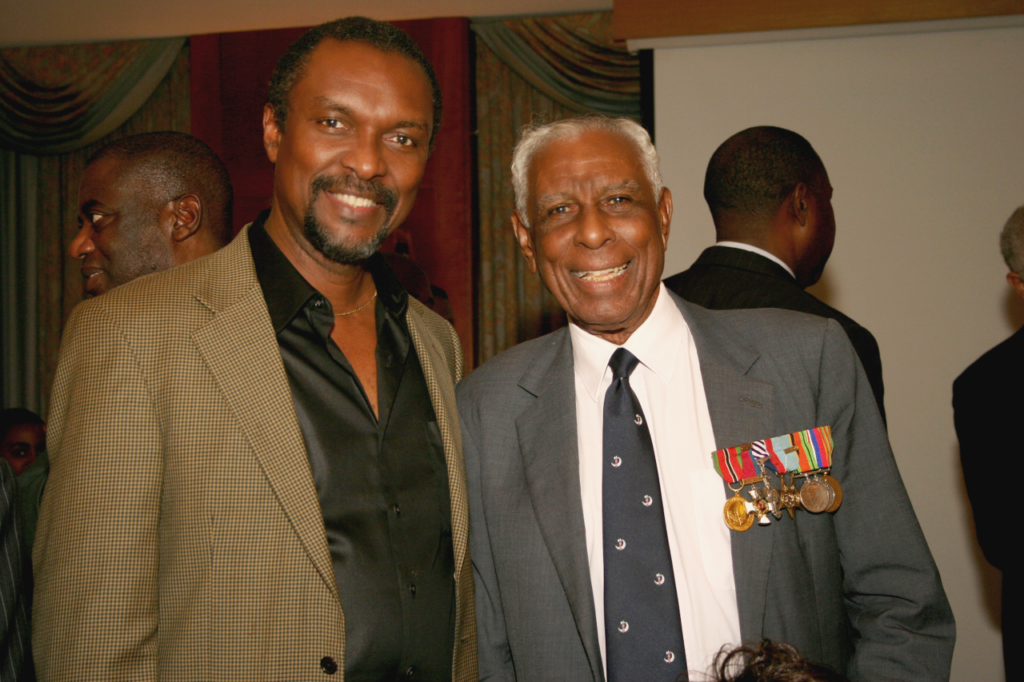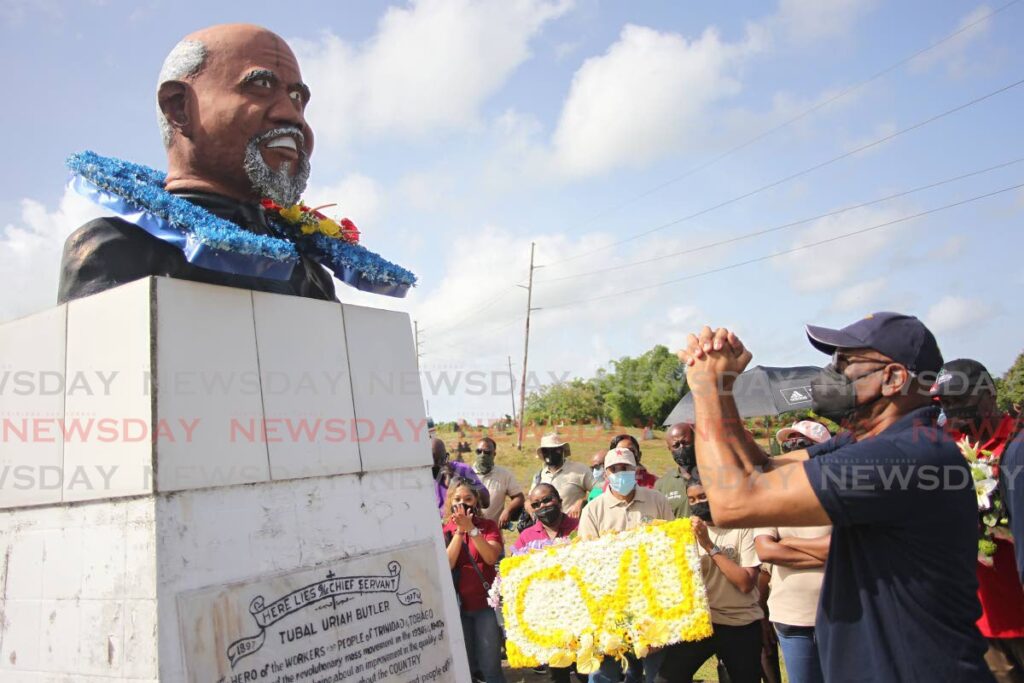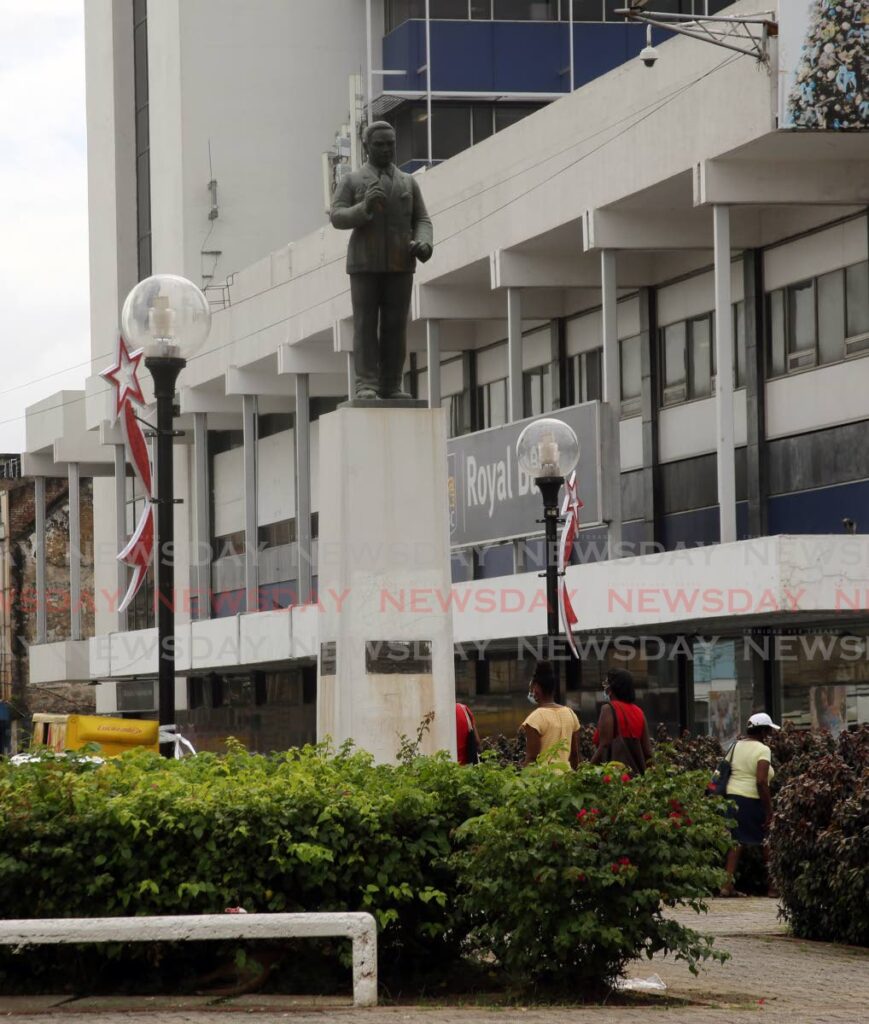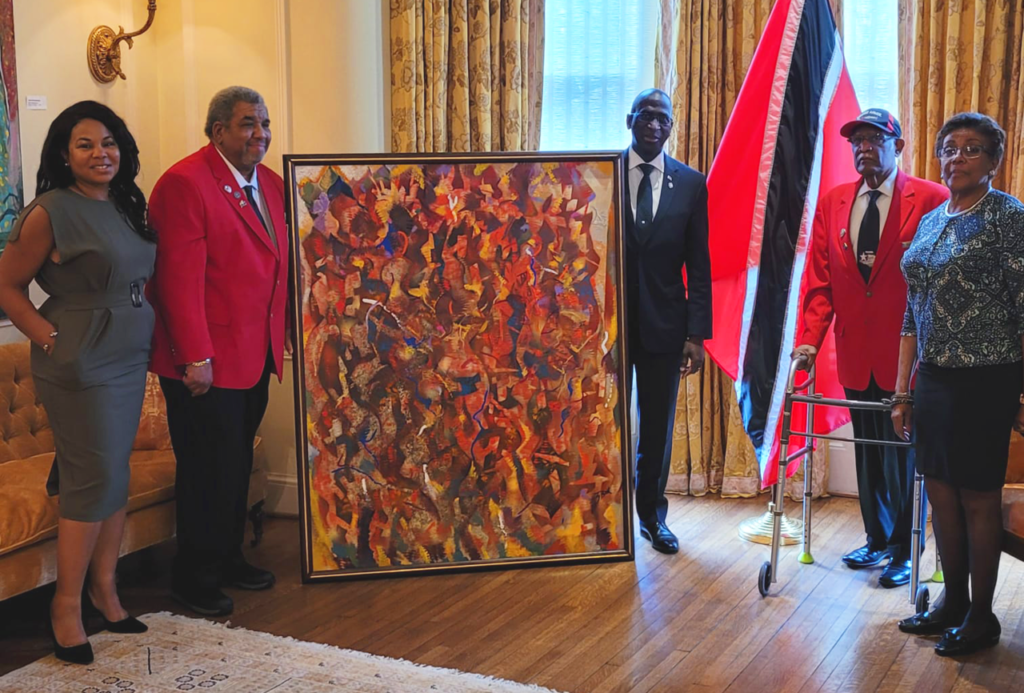The war heroes who walked among us

DAVID BOOTHMAN
In celebrating the Caribbean American Heritage Month in June and the Emancipation Day celebrations in August, the Caribbean Renaissance Foundation decided to highlight the war heroes who brought pride to and beyond the shores of the Caribbean.
As contained in the programme notes for
The Caribbean Glory, written and produced by Gabriel J Christian and Judge Irving W André: "Few people know that thousands of British West Indians served in the British armed forces during World Wars I and II. Those who served in World War I, such as Norman Washington Manley (Jamaica), Capt Arthur Cipriani (Trinidad) and Tubal Uriah “Buzz” Butler (Grenada and Trinidad) went on to become leaders for beneficial social change which enhanced freedom and democracy in the British West Indies.

"When World War II broke out on September 1, 1939, many British West Indians answered the call. About 16,000 West Indians volunteered for service alongside the British...
"Wendell Christian and Twistleton Bertrand served in the South Caribbean Forces, which were created to secure the southern part of the region closest to Trinidad’s oil industry and the vital refineries in Curaçao then under attack by marauding German U-Boats.
"Over 100 British West Indian women were posted overseas, of whom 80 joined the Women’s Auxiliary Air Force (WAAF) to make their contribution, and around 30 chose the Auxiliary Territorial Service (ATS), while other ATS and WAAF service women stayed in the Caribbean region and did local duty.
"Around 7,000 West Indians served in the Royal Air Force (RAF) and the Royal Canadian Air Force (RCAF) in roles from fighter pilots to bomb aimers, air gunners to ground staff and administration. No other colony contributed more airmen to the RAF than those from the British West Indies.”
Paying homage
On June 19, 2009, 13 years ago, Caribbean Glory paid homage to some Caribbean war heroes:
Trinidad: Squadron Leader Phillip Louis Ulric Cross, DFC, DSO who was an ace navigator in the Royal Air Force from 1941-45 and flew 80 missions over occupied Europe and Germany, including 20 over heavily defended sites in Berlin. A graduate of London University and the Middle Temple, he became a judge in Ghana and Tanzania; he was also attorney general of Cameroon.
He later served as ambassador to France and Germany and High Commissioner to London for
TT.
Jamaica: Rt Hon Dudley Thompson, QC, was a flight lieutenant in the Royal Air Force and served on Lancaster bombers on missions over the war torn skies of Europe. He was an organiser of the 1945 Pan African Conference with Jomo Kenyatta, Kwame Nkrumah and Dr WEB Dubois.
He was a Rhodes Scholar and Oxford law graduate. He successfully represented Kenyatta when he was imprisoned during the Kenyan independence uprising. He became Minister of Foreign Affairs and Minister of National Security at different times in Jamaica’s Government.
Dominica: Wendell Christian, British Army South Caribbean Forces, engaged in garrison duty with South Caribbean Command of the British Army in the Eastern Caribbean. He helped secure that region in the dark days of 1943-45 when German U-Boats sank alien ships in the Caribbean/Atlantic area.
Dominica: Twistleton Bertrand was an NCO with the British Army’s South Caribbean Forces from 1944-47. He served alongside Christian and rose to become the commander of the Dominica Defence Force (Major) and aide-de-camp to the lieutenant governor of Canada.
Also mentioned were other heroes who made the ultimate sacrifice for the entire Caribbean. Among them was was Flight Sgt RAF Spitfire James Hyde of San Juan, Trinidad. He gave his life for king and country and in order to secure our Caribbean freedom.
According to Caribbean Glory's research, “Many British West Indians, as our nations were colonies, were noted as 'Nationality: United Kingdom.' We believe that more than 500 British West Indians perished in the RAF, as we discovered more new names with regularity."
Among heroes who were mentioned are: Norman Manley, QC, of the Royal Horse Artillery, WWI, who became Chief Minister of Jamaica and a leading proponent of the British West Indian Federation, which lasted from 1958-62.

Prime Minister Errol Barrow led Barbados to independence. As a WWII RAF veteran he flew some 45 operational bombing missions over the European theatre. By 1945 he had risen to the rank of flying officer and was appointed personal navigator to the commander-in-chief of the British Zone in occupied Germany, Sir William Sholto Douglas.
Royal Air Force flying officer Julian Marryshow of Grenada was involved in the D-Day Invasion, Marryshow is credited with destroying several trains and rocket launcher sites. After being shot down by flak he was able to elude capture after bailing out from his damaged fighter plane and was rescued before being taken prisoner by the Germans.
Women who served
Women served in the British Army Territorial Service (ATS) during WW II. In October 1943, a group of 30 women from across the Caribbean arrived in Britain. Motivated by loyalty to the "mother country," they were the vanguard of over 100 West Indian women eventually recruited to the ATS in Britain.
Despite the wartime personnel shortage, these pioneers faced a long struggle to be accepted for enlistment by a sexist and racist War Office that seemed determined to restrict black people from the British women's military services.
Other untold stories
RAF Flight Lieut Cy Grant of Guyana was shot down over Holland, survived capture by the Gestapo and was imprisoned for two years in the Luftwaffe-run prisoner-of-war camp Stalag Luft III, site of the famous “Great Escape" by allied airmen. His story is cited on www.caribbeanaircrew-ww2.com.
In the US there were other groups of war heroes from the Caribbean. The Tuskegee Airmen were a group of African-American and Caribbean-born military pilots who fought in World War II. They formed the 332nd Fighter Group and the 477th Bombardment Group of the US Army Air Forces. The name also applies to the navigators, bombardiers, mechanics, instructors, crew chiefs, nurses, cooks and other support personnel.
The group included five Haitians from the Haitian Air Force, and pilots from Trinidad and the Dominican Republic.
There are amazing untold stories of Caribbean heroism.
“Alix Pasquet was a World War II fighter pilot, one of only five Haitian members of the Tuskegee Airmen, a soccer star, and a political revolutionary. He was killed while leading a coup attempt against Haitian President François Duvalier in 1958.
In 1942, Haitian President Élie Lescot implemented an aviation corps programme and chose three men out of 42 corps members to receive pilot training in Tuskegee, Alabama. Alix Pasquet, a law graduate of École Millitaire d’Haiti and an officer in the Haitian army at the time, was one of these three chosen officers.
The US government needed the Haitians to organise a patrol of the Caribbean Sea during WW II and gave the Haitian government six planes. These could carry bombs and attack German submarines in the area. In February 1943, Pasquet, along with Raymond Cassagnol and Phillippe Célestin, he travelled from Port-au-Prince to Alabama to begin training at the Tuskegee Flight School. The Tuskegee Airmen were renowned for their unmatched record of more than 200 combat missions with few losses.
"It would be years before the accomplishments of the Tuskegee Airmen would be acknowledged.
Raymond Cassagnol, who would become the only survivor of the Haitian Tuskegee Airmen, was a special guest at the inauguration of US President Barack Obama in 2009. Decades before, he had been honoured for his contributions to WWII as a Tuskegee Airman in Italy, and some years later his achievements were finally recognised by the US, as were those of Eberle Guilbaud and Alix Pasquet. Pasquet’s son accepted the award on behalf of his late father.”
( https://cafriseabove.org and https://www.caribbeanaircrew-ww2.com/)
This year's tribute
This year the Caribbean Renaissance Foundation moved to empower and to partner with the East Coast Chapter Tuskegee Airmen, Inc (ECCTAI) in its mission to honour the accomplishments and perpetuate the history of African Americans, including Caribbean Americans who participated in air crew, ground crew and operation-support training in the Army Air Corps during WWII. ECCTAI is the oldest and largest chapter of Tuskegee Airmen, Inc.
CRF donated one of my paintings, From Earth to Folk, to the fund-raising silent auction for ECCTAI's 81st anniversary celebration of these patriots as part of a series of events from 2022 through March 2023.
From Earth to Folk, is a concept the reverse of “From dust to dust, ashes to ashes,” and suggests Man’s beginnings, born of Mother Earth, the original traditions of man (humanity), the folk element, the Caribbean's uniqueness of being the most recent human groupings on the planet connecting to the indigenous First Peoples of the world.”

For additional information about ECCTAI or artwork, contact Vanessa Butler, strategic partnership and engagement adviser, at blackpearlmgmtllc@gmail.com
About CRF
CRF says it encourages the Caribbean’s young generation of entrepreneurs and artists/animators to research, ignite and invest in the stories that would be ours to tell. Create our own myth, with our own Caribbean heroes – their service, global sacrifices and accomplishments.
CRF highlights not only our cultural icons in the arts and sciences but the intelligence within Caribbean hearts and minds that most times go unnoticed, unperceived, and undervalued.
Also, we pay attention to those who are not included in the Caribbean's cultural lexicon.
Artist/composer/musician/educator David Boothman is chairman of Caribbean Renaissance Foundation and master artist in residence at the University of Trinidad and Tobago.

Comments
"The war heroes who walked among us"